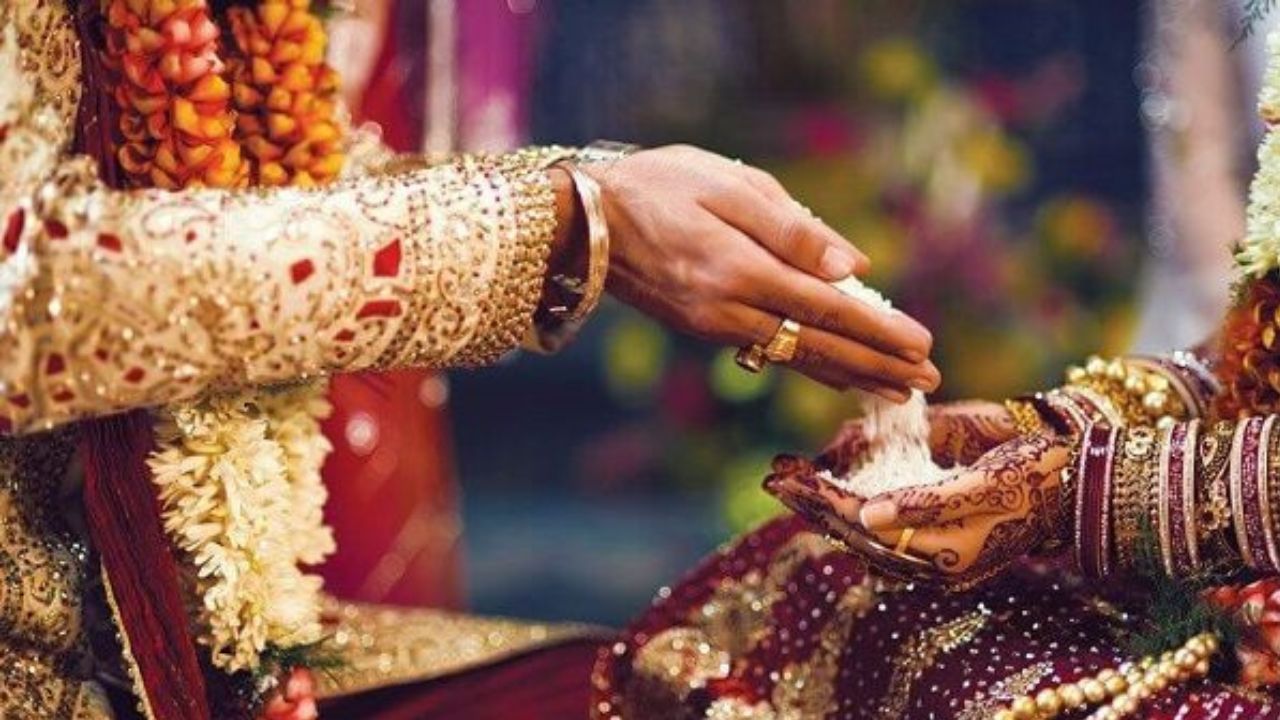Sindhi wedding

A Sindhi wedding is a traditional wedding ceremony that is celebrated by the Sindhi community of India and Pakistan. The Sindhi community is known for its rich cultural heritage, and their wedding ceremonies are characterized by colorful decorations, lively music, and elaborate rituals. Here are some of the key features of a Sindhi wedding:
- Pre-wedding rituals: The Sindhi wedding ceremony typically begins with several pre-wedding rituals, such as the Saanth ceremony, which is the formal engagement ceremony, and the Pakki Misri ceremony, where the groom’s family visits the bride’s home to finalize the wedding arrangements.
- The Mehendi ceremony: This is a pre-wedding ritual where the bride’s hands and feet are adorned with intricate henna designs.
- The Baraat: The Baraat is the groom’s wedding procession, where he arrives at the wedding venue with his family and friends, often on a decorated horse or in a decorated car.
- The wedding ceremony: The Sindhi wedding ceremony is typically held in a mandap, which is a decorated canopy or pavilion. The bride and groom exchange garlands, and the wedding rituals are conducted by a priest.
- The Kanyadaan: The Kanyadaan is a ritual where the bride’s father gives her hand in marriage to the groom.
- The Saat Phere: The Saat Phere is a ritual where the bride and groom take seven rounds around the sacred fire, with each round symbolizing a vow to be kept by the couple.
- The Sindoor and Mangalsutra: The groom applies sindoor (vermilion powder) on the bride’s forehead, and the groom ties the mangalsutra (a sacred necklace) around the bride’s neck.
- The Bidai: The Bidai ceremony is when the bride says goodbye to her family and leaves with her husband to start a new life together.
- The reception: The Sindhi wedding reception is usually a grand affair, with delicious food, music, and dance performances.
Overall, Sindhi weddings are known for their lively and colorful celebrations, which reflect the cultural heritage of the community. The weddings are a time for family and friends to come together to celebrate the union of two people and their families.
Specific Content Keywords : Sindhi Wedding,Sindhi Traditions,Sindhi Community,Pre-wedding Rituals,Ropan or Thadri Ceremony,Pakki Mishri Ceremony,Berana Ceremony,Mehndi Ceremony,Sangeet Night,Saagri or Haldi Ceremony,Tikka Ceremony,Gana Ritual
Mehfil and Sufi Music,Kacchi Mishri Ceremony,Engagement Ceremony,Wedding Invitations,Baraat Procession,Ghodi (Horse) or Palki (Palanquin) Ride,Shehnai Music,Sindhi Attire,Sindhi Topi,Bridal Lehenga or Sari,Groom’s Traditional Outfit (e.g., Bandi, Chola),Sehra Bandi,Jaimala (Exchange of Garlands),Pheras (Seven Rounds),Sindhi Wedding Vows,Laavan Phere (Four Circumambulations),Kanyadaan Ritual
Saptapadi (Seven Steps),Sindhi Wedding Customs,Post-wedding Rituals,Bidai (Farewell),Grihapravesh (Welcoming the Bride),Reception Celebration,Traditional Sindhi Cuisine,Sindhi Curry and Biryani,Sai Bhaji and Dal Pakwan,Lolo (Sindhi Sweet),Sindhi Folk Dance Performances,Traditional Music Instruments (e.g., Sindhi Sarangi),Family Blessings and Rituals,Decorative Elements (e.g., Sindhi Ajrak, Ralli Quilts),Henna Artists,Wedding Photography and Videography
Honeymoon Planning,Sindhi Wedding Jewelry (e.g., Gajra, Thushi),Chhapan Bhog Ceremony
Wedding Gifts and Dowry,Community Celebrations and Participation

